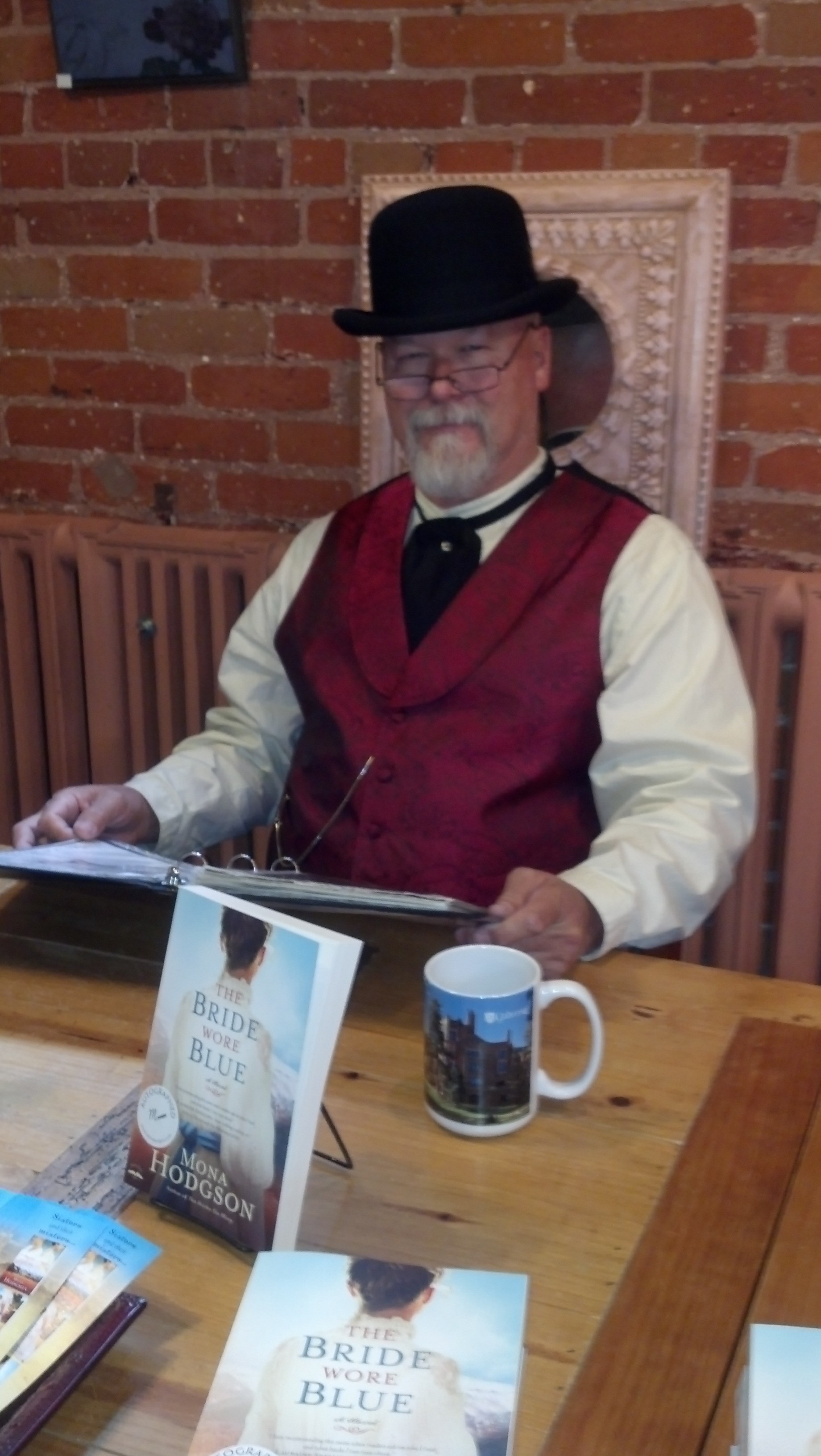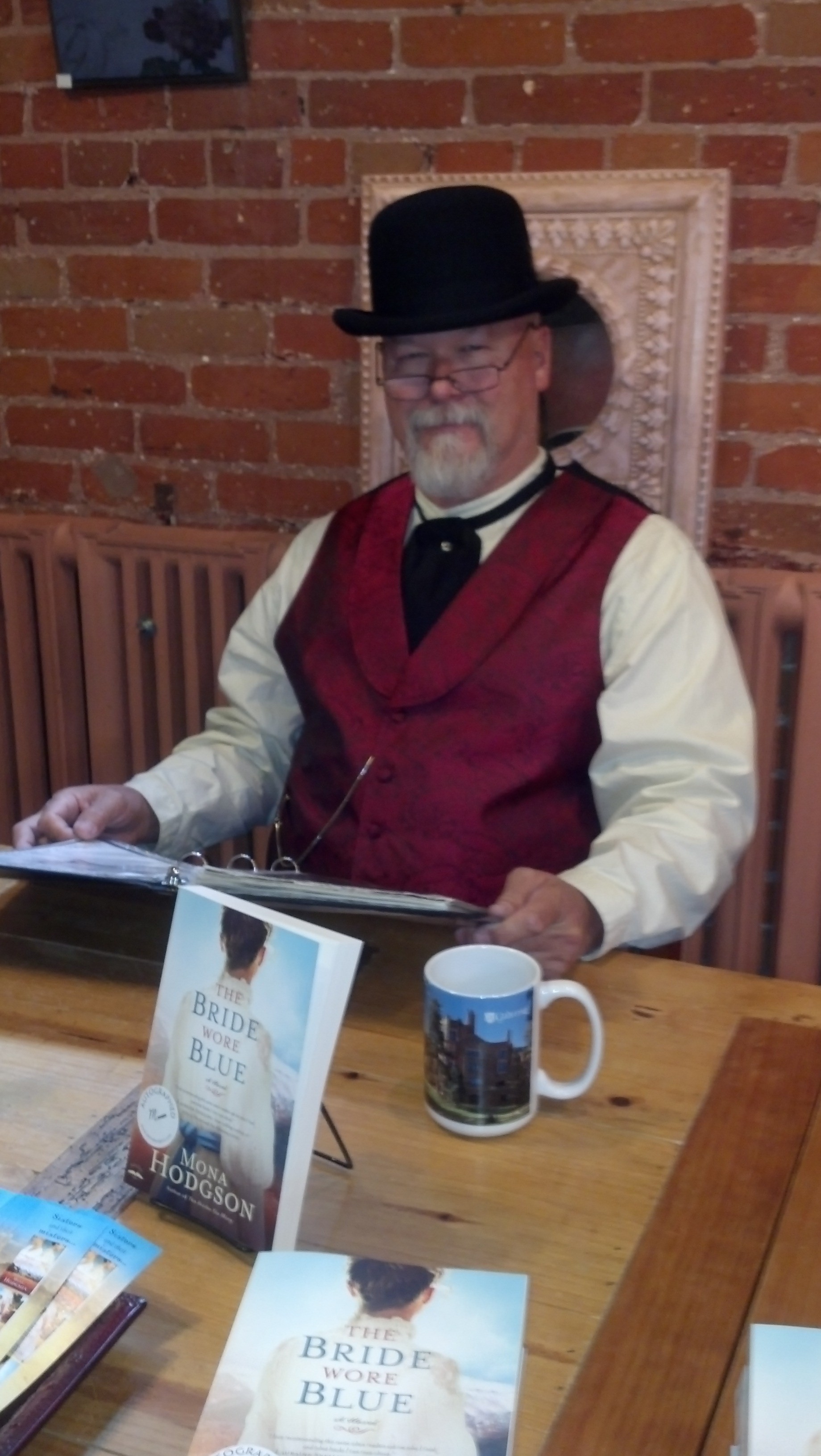The pursuit of riches drew tens of thousands of colorful characters to Cripple Creek in the 1890s. The boom town provided me a canvas on which to draw my stories in The Sinclair Sisters of Cripple Creek Series.
 Good news! My hubby Bob agreed to flesh out the workings of a gold mining camp in that era for us. Headframes and Cable Hoists is the first in the series of articles and videos by Bob.
Good news! My hubby Bob agreed to flesh out the workings of a gold mining camp in that era for us. Headframes and Cable Hoists is the first in the series of articles and videos by Bob.
AND NOW, BOB’S CORNER . . .
With a nod to Bullwinkle J. Moose, and his Bullwinkle’s Corner, I have agreed to share what I know about mining in the 1890’s with Mona’s readers. My hope is that I don’t come across as Mr. Know-It-All. (Another of Bullwinkle’s famous characters)
Today’s subject is the most visible part of hard-rock mining–the headframe and cable hoist.
When you drive through Cripple Creek, the first thing you notice on all of the hillsides are the piles of rock, looking like giant gopher holes. They are, indeed, circling holes that are dug straight down into the solid rock. A mining claim protected the owner from anyone encroaching on their ore. The claim was described as a certain surface area and down, literally to the center of the earth. If you had any hope of keeping any of the gold you recovered, you had to stay within your surface measured area.
Lawyers were kept busy protecting the claims from anyone cutting across underground and into your claim. It’s hard to believe, but a lawyer was a good thing at a time when Sam Colt’s famous invention was a more popular deterrent.
Which brings us to the headframe. In order to get men and equipment into the mine, they had to be lowered by cable. Likewise, any ore had to be lifted up and out. And some of the mines in the Cripple Creek District were more than 1000 feet deep.

Two styles of Headframe. The one in the foreground also has a cable hoist. Notice the spoked pulley at the top.
A steel structure was built over the opening, with a pulley at the top. The headframe was built tall enough to lift any elevators or ore buckets clear of the mine, and sometimes enough that a train could pull through, depositing the ore directly into the cars.
At one time, every one of the holes I mentioned had a headframe. If a mine failed to produce, the headframe was moved to the next hole. No effort was made to fill in the holes, so a night-time stroll on the hillsides is not recommended.
A cable was strung over the pulley, and down the shaft of the mine. This took a lot of cable, so it would be wound around the spool of a cable hoist. The cable hoist could be powered by electricity or steam at the time, but steam was a more reliable source of power. It would be extremely disconcerting if the local generator went out when you were at the bottom, or for that matter, anywhere along the way. More on the elevator situation in a later post.
In the video, you will see a steam cable hoist, with a description of it’s basic workings. Also, in the video, I refer to the ore buckets and elevators, and I promise I will show them to you next time. I felt it was more sensible to start at the top.


Comments 3
Very interesting Mona, I enjoyed!!! Pat Hines –[email protected]
Hi Pat! I thought so too. Excited Bob has agreed to do this for us periodically. Thanks for joining me here.
Pingback: Bob’s Corner: Mine Elevators and Ore Cars « Hindsight by Mona Hodgson